(Chicago, IL: April 17, 2021) National Federation of Indian American Associations (NFIA), FIA Chicago, GOPIO and India community organizations in the Chicago region, came together and organized a virtual interactive meeting on Thursday, April 15th, 2021with Honorable Amit Kumar, Consul General of India in Chicago provided a forum for the Indian American community leaders to clarify several issues, mostly pertaining to Consular services that are of importance to the community.
In his address, Ambassador Amit Kumar pointed to how the Covid pandemic continues to remain uncertain with the emergence of new variants. “We see a surge in India,” he said and urged the community “to follow the guidelines set by CDC and stay cautious.” On another note, the Indian Envoy flagged off the 75th anniversary of India’s Independence (India@75) ‘Azadi ka Amrit Mahotsav.’ “We will be organizing a series of events to celebrate this momentous event. I welcome your suggestions as to how we can work together to make this historic event a memorable one for all of us,” he said.
In his opening remarks, Ajoy Kumar Dube, NFIA President set the tone for the meeting by saying, “NFIA along with its members organizations promote and foster goodwill between the people of the United States & the people of India. NFIA tries to cultivate and encourage unity among all Indian-American organizations and serves as a catalyst and as a forum for the fellowship, exchange of ideas, and representation of the interests of the Indian-American community. NFIA along with its member organizations provide, direct, develop or secure means from among the member associations, and other resources for educational and humanitarian causes for needy, disadvantaged and deserving groups and individuals.”
Mr. Dube said, “GOPIO and other Indian Community organizations have common interest of achieving better USIndia Relations. GOPIO has had interactive sessions with Indian Consulate and Embassy officials in the past and have discussed contemporary issues which are of concern to Indian American community and the Indian Diaspora at large. The event tonight, addressed by Ambassador Kumar and other officials of the Consulate will discuss some of the issues of common interest to the Indian Diaspora community.”
Ambassador Amit Kumar is a career diplomat and joined the Indian Foreign Service in 1995. He has wide ranging experience having served in Headquarters and in several Indian Missions abroad. He has dealt with both bilateral and multilateral work in diverse areas such as political, strategic and economic spheres. Prior to taking up his current assignment as the Consul General of India in Chicago, he was the Deputy Chief of Mission in the Embassy of India, Washington DC with Ambassador-rank.
Reflecting on the trajectory of Emerging US-India Relations – Role of Indian American community, Ambassador Kumar said, “The partnership between India and the United states is built on people to people connection. Indian Americans work in almost all areas, especially in healthcare, clean energy, digital tech, higher education, and economic cooperation. NRIs play a critical role in enhancing the relationship. We look forward to leverage that cooperation,” he said.
On the recent announcement by the Government of India on OCI related issues, Ambassador Kumar said, “We have taken these steps to simplify measures with your participation and collaboration,” he told the leaders of the Indian American community. Government of India continues to simply the procedures and we are open to your suggestions.”
The Government of India on April 15, 2021 announced that the Overseas Citizen of India (OCI) cardholders will now be required to get their document re-issued only once at the age of 20 instead of multiple times needed currently. According to a Press Information Bureau statement, a person who has got registration as OCI cardholder prior to attaining the age of 20 years will have to get the card re-issued only once when a new passport is issued after his or her completing 20 years of age, so as to capture his or her facial features on attaining adulthood.
If a person has obtained registration as OCI cardholder after attaining the age of 20 years, there will be no requirement of re-issue of OCI card, it said. Currently, the OCI card is required to be re-issued each time a new passport is issued up to 20 years of age and once after completing 50 years of age, in view of biological changes in the face of the applicant. “With a view to facilitate the OCI cardholders, the government has decided to dispense with this requirement,” it added.
Ambassador Kumar said, with a view to update the data regarding new passports obtained by the OCI cardholder, it has been decided that he/she shall upload a copy of the new passport containing his/her photo and also a latest photo on the online OCI portal, each time a new passport is issued up to 20 years of age and once after completing 50 years of age. These documents may be uploaded by the OCI cardholder within 3 months of receipt of the new passport. “There has been a surge in OCI application, which has delayed the process,” the Ambassador warned. He referred to travel to India and current travel restrictions on tourist visas to India due to Covid.
Coveying greetings from the GOPIO International, Dr. Thomas Abraham, current Chairman of GOPIO International and the Founder President of FIA and NFIA shared with the audience as to how we was instrumental in starting several organizations that are now pillars of the Indian American community around the world. “We want to see where there are common interests,” Dr. Abraham said. Referring to the New Administration in DC and that the there are several elected officials from the Indian American community at the federal and state levels, he urged them to utilize the achievements to build relationship between India and the US.
While welcoming the new measures to simplify the OCI cards, Dr. Abraham was cautious and said, “GOPIO strongly urges the government to treat OCI Card holders who have invested in business and creating jobs in India at par with Indian citizens and they shouldn’t be termed as foreign nationals by various Govt. agencies while doing business including manufacturing and research in India,” Dr. Abraham added.
Prominent among those who attended the event included, Raj Patel, President, FIA (Chicago Area); Babu K. Patel, Foundation Chair, NFIA; Sohan Joshi, Past President, NFIA; Satish Gabhawala, RVP, NFIA; Gladdon Varghese, GOPIO; Minhhaj Akhtar, Director At Large, NFIA; and Dr. Thomas Abraham.
The members and leaders of the community raised several issues especially how imposrtant it is for the Consulate to each out large PIO communities in the Chicago area; Cooperation with the Consulate on joint programs and cultural matters; Emergency Services to Indian American community members in need. The Consul and the officials from the Consulate answered and clarified several questions related to Passport, Visa and OCI Card Issues, Emergency Visa, Power of Attorney and other Consular matters. For more information or if you have an issue to be taken up with the Consulate in Chicago.

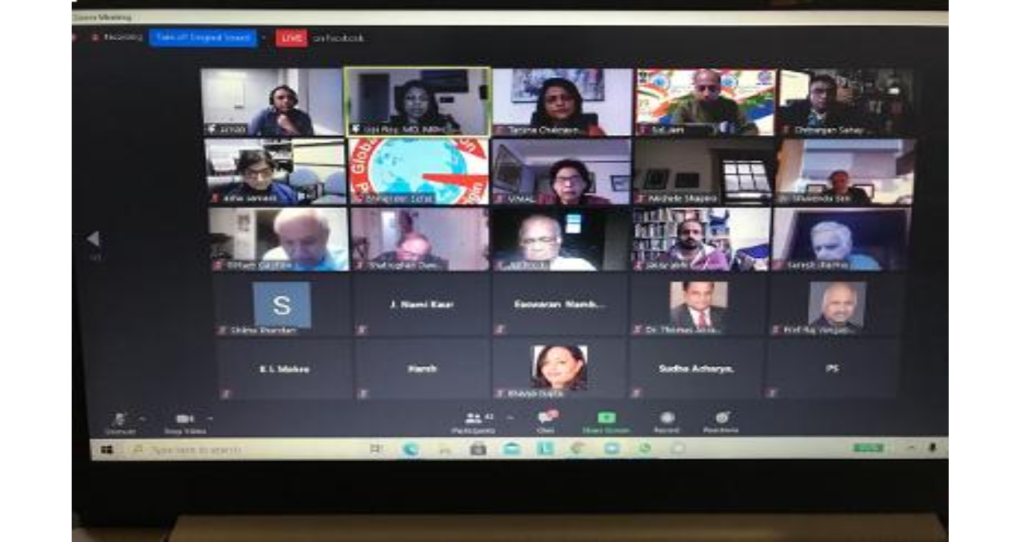 In his address, Dr. Shuvendu Sen, an Ambassador of the New Jersey Re-entry Commission, who contributes to the behavioral and medical health of the formerly incarcerated female population, and a best-selling author of the book, Why Buddha Never Had Alzheimer’s: A Holistic Treatment Approach through Meditation, Yoga and the Arts, thanked GOPIO for its contributions to enhance Indian values and for the many accomplishments. Dr. Sen reminded the audience that “This is not the first time it has happened. The world has experienced similar calamities, changing our well structures lifestyles. We have seen it time and time again. However, whenever we have been hurt, humanity is tremendously powerful to resurface from the dust.”
In his address, Dr. Shuvendu Sen, an Ambassador of the New Jersey Re-entry Commission, who contributes to the behavioral and medical health of the formerly incarcerated female population, and a best-selling author of the book, Why Buddha Never Had Alzheimer’s: A Holistic Treatment Approach through Meditation, Yoga and the Arts, thanked GOPIO for its contributions to enhance Indian values and for the many accomplishments. Dr. Sen reminded the audience that “This is not the first time it has happened. The world has experienced similar calamities, changing our well structures lifestyles. We have seen it time and time again. However, whenever we have been hurt, humanity is tremendously powerful to resurface from the dust.”
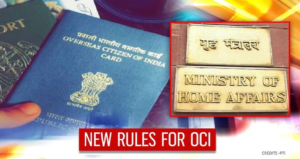 With a view to update the data regarding new passports obtained by the OCI cardholder, it has been decided that he/she shall upload a copy of the new passport containing his/her photo and also a latest photo on the online OCI portal, each time a new passport is issued up to 20 years of age and once after completing 50 years of age. These documents may be uploaded by the OCI cardholder within 3 months of receipt of the new passport.
With a view to update the data regarding new passports obtained by the OCI cardholder, it has been decided that he/she shall upload a copy of the new passport containing his/her photo and also a latest photo on the online OCI portal, each time a new passport is issued up to 20 years of age and once after completing 50 years of age. These documents may be uploaded by the OCI cardholder within 3 months of receipt of the new passport.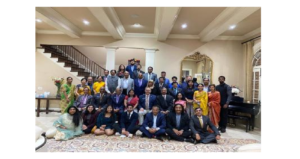 Governor McMaster presented the proclamation to KV Kumar, President & CEO of IAICC at the inauguration and appreciated the work of IAICC. While speaking at the event, Governor McMaster welcomed IAICC to South Carolina and said his administration will work with IAICC and support its initiatives in the State.
Governor McMaster presented the proclamation to KV Kumar, President & CEO of IAICC at the inauguration and appreciated the work of IAICC. While speaking at the event, Governor McMaster welcomed IAICC to South Carolina and said his administration will work with IAICC and support its initiatives in the State.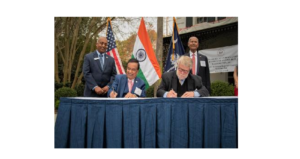 Welcoming the gathering, KV Kumar appreciated Governor McMaster’s efforts in the State and thanked him and the First Lady Peggy McMaster for graciously hosting the IAICC inauguration and the reception at the Governor’s Mansion. He also thanked the Indian Ambassador to the US, Mr. Taranjit Singh Sandhu, and the Consul General of India in Atlanta, Dr. Swati Kulkarni for their continued support to IAICC. Kumar said he missed the Ambassador at the event, and congratulated him for bringing several key initiatives to strengthen India-US relations. During her address,
Welcoming the gathering, KV Kumar appreciated Governor McMaster’s efforts in the State and thanked him and the First Lady Peggy McMaster for graciously hosting the IAICC inauguration and the reception at the Governor’s Mansion. He also thanked the Indian Ambassador to the US, Mr. Taranjit Singh Sandhu, and the Consul General of India in Atlanta, Dr. Swati Kulkarni for their continued support to IAICC. Kumar said he missed the Ambassador at the event, and congratulated him for bringing several key initiatives to strengthen India-US relations. During her address,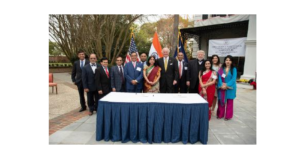 IAICC SE Regional Chairman, Dr. Narasimhulu Neelagaru also thanked Governor McMaster for his support and said he looked forward to working him and the State of South Carolina. At the event, Mr. Kumar introduced Ms. Bhavna Vasudeva, President of IAICC-SC Chapter.
IAICC SE Regional Chairman, Dr. Narasimhulu Neelagaru also thanked Governor McMaster for his support and said he looked forward to working him and the State of South Carolina. At the event, Mr. Kumar introduced Ms. Bhavna Vasudeva, President of IAICC-SC Chapter.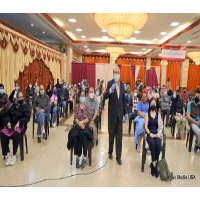 BAPS Charities has supported local communities during these trying times by battling the misinformation surrounding COVID-19 vaccines and providing vaccination infrastructure. Similar Vaccination Drives have been planned at over 30 cities throughout North America wherein thousands of community residents will get easy access to vaccines.
BAPS Charities has supported local communities during these trying times by battling the misinformation surrounding COVID-19 vaccines and providing vaccination infrastructure. Similar Vaccination Drives have been planned at over 30 cities throughout North America wherein thousands of community residents will get easy access to vaccines.
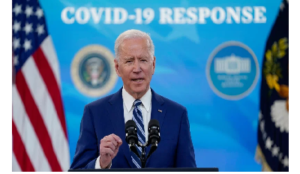 Biden also renewed calls for Americans to wear masks, framing the choice as a “patriotic duty.” “I need the American people do their part as well. Mask up, mask up. It’s a patriotic duty. It’s the only way we ever get back to normal,” he said. With a nod to the role of the private sector, Biden also suggested businesses should also require the use of masks. “The failure to take this virus seriously precisely what got us to this mess in the first place, risk more cases, more deaths,” he said.
Biden also renewed calls for Americans to wear masks, framing the choice as a “patriotic duty.” “I need the American people do their part as well. Mask up, mask up. It’s a patriotic duty. It’s the only way we ever get back to normal,” he said. With a nod to the role of the private sector, Biden also suggested businesses should also require the use of masks. “The failure to take this virus seriously precisely what got us to this mess in the first place, risk more cases, more deaths,” he said.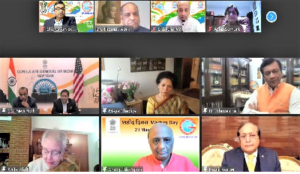 Consul General Jaiswal, in his address, commended GOPIO Manhattan for organizing the event and several others, honoring India and Indians. “Today is the Red Letter Day in the history of India,” the Indian diplomat with over three decades of diplomatic services around the world, told the hundreds of community leaders from around several continents who joined the celebration. “We honor today the legendary freedom fighters, recalling their bravery and love for our motherland.” Describing today’s celebrations as unique, Ambassador Jaiswal recalled the founding of the
Consul General Jaiswal, in his address, commended GOPIO Manhattan for organizing the event and several others, honoring India and Indians. “Today is the Red Letter Day in the history of India,” the Indian diplomat with over three decades of diplomatic services around the world, told the hundreds of community leaders from around several continents who joined the celebration. “We honor today the legendary freedom fighters, recalling their bravery and love for our motherland.” Describing today’s celebrations as unique, Ambassador Jaiswal recalled the founding of the 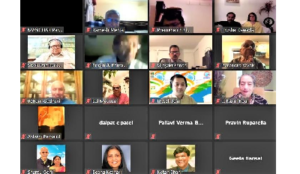 In 1913 Lala Har Dayal formed the Ghadar Party to organize a rebellion against the British government of India. He fled to Switzerland and then to Berlin, where he tried to foment an anti-British rising in northwestern India. After the German defeat in World War I, Har Dayal settled in Stockholm as a professor of Indian Philosophy and wrote Forty-Four Months in Germany and Turkey. He moved to the USA in the late 1920s and became a Professor of Sanskrit at the University of California, Berkeley.
In 1913 Lala Har Dayal formed the Ghadar Party to organize a rebellion against the British government of India. He fled to Switzerland and then to Berlin, where he tried to foment an anti-British rising in northwestern India. After the German defeat in World War I, Har Dayal settled in Stockholm as a professor of Indian Philosophy and wrote Forty-Four Months in Germany and Turkey. He moved to the USA in the late 1920s and became a Professor of Sanskrit at the University of California, Berkeley.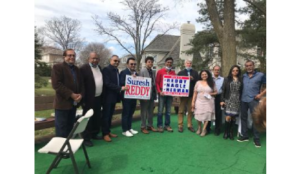 Dr. Reddy comes with immense experiences and proven leadership. Dr. Reddy grew up in the suburbs of Hyderabad in Southern India. A financial conservator, Dr. Reddy always had a passion for “uniting and bringing people together.” Recalling his childhood, the dynamic leader says, “It all started during my childhood with bringing neighborhood kids together to play “gully cricket” and also bringing people together in college to organize events, demonstrations, and educational tours. Bringing opposing parties to the table for resolving issues has always been my strong strength since my schooling days.”
Dr. Reddy comes with immense experiences and proven leadership. Dr. Reddy grew up in the suburbs of Hyderabad in Southern India. A financial conservator, Dr. Reddy always had a passion for “uniting and bringing people together.” Recalling his childhood, the dynamic leader says, “It all started during my childhood with bringing neighborhood kids together to play “gully cricket” and also bringing people together in college to organize events, demonstrations, and educational tours. Bringing opposing parties to the table for resolving issues has always been my strong strength since my schooling days.”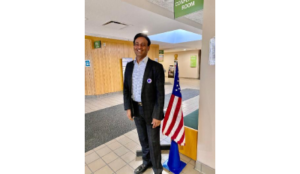 What motivates him to take on yet another challenging role for the betterment of the community? “My mantra is: If you don’t lead, someone else will lead you. If you don’t pick the right leader, the wrong leader will pick you, and as my good friend US Congressman Raja Says, and if you are not on the table, you will be on the menu
What motivates him to take on yet another challenging role for the betterment of the community? “My mantra is: If you don’t lead, someone else will lead you. If you don’t pick the right leader, the wrong leader will pick you, and as my good friend US Congressman Raja Says, and if you are not on the table, you will be on the menu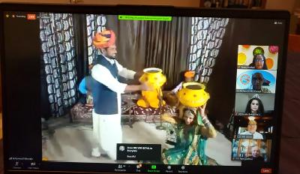 Holi has become known as India’s most vivid, joyous-festival. Holi is being celebrated in the Indian subcontinent for centuries, with poems documenting celebrations dating back to the 4th century CE. It marks the beginning of spring after a long winter, symbolic of the triumph of good over evil. It is celebrated in March, corresponding to the Hindu calendar month of Phalguna. On the eve of the festival, large pyres are lit in many parts of India to signify the burning of evil spirits. People often throw wood, dried leaves and twigs into bonfires, Ambassador Jaiswal explained.
Holi has become known as India’s most vivid, joyous-festival. Holi is being celebrated in the Indian subcontinent for centuries, with poems documenting celebrations dating back to the 4th century CE. It marks the beginning of spring after a long winter, symbolic of the triumph of good over evil. It is celebrated in March, corresponding to the Hindu calendar month of Phalguna. On the eve of the festival, large pyres are lit in many parts of India to signify the burning of evil spirits. People often throw wood, dried leaves and twigs into bonfires, Ambassador Jaiswal explained.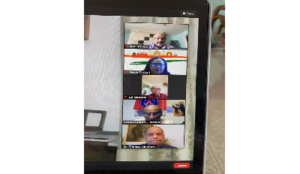 “The vibrancy of colors is something that brings in a lot of positivity in our lives and Holi being the festival of colors is actually a day worth rejoicing,” Motwani said. “Holi is considered as one of the most revered and celebrated festivals of India and it is celebrated in almost every part of India, transcending every region, and people of all faiths, including Hindus, Muslims, Sikhs, Christians, Parsees, Buddhists, and Jains. It represents the uniqueness of Indian culture as we, from all backgrounds stand united to welcome Spring, as Mother Nature breathes freshness into our lives and that of every living creature on Earth. Welcome to each and every one of you and wishing you and your families A VERY HAPPY HOLI!”
“The vibrancy of colors is something that brings in a lot of positivity in our lives and Holi being the festival of colors is actually a day worth rejoicing,” Motwani said. “Holi is considered as one of the most revered and celebrated festivals of India and it is celebrated in almost every part of India, transcending every region, and people of all faiths, including Hindus, Muslims, Sikhs, Christians, Parsees, Buddhists, and Jains. It represents the uniqueness of Indian culture as we, from all backgrounds stand united to welcome Spring, as Mother Nature breathes freshness into our lives and that of every living creature on Earth. Welcome to each and every one of you and wishing you and your families A VERY HAPPY HOLI!” Lincolnwood Alliance candidates in the current elections are Jesal Patel for Mayor, Beryl Herman for Clerk, and three candidates Jean Ikezoe-Halevi, Grace Diaz Herrera, Mohammed Saleem for Trustees.Jesal, for over 14 years, has proven his honesty and integrity through his work and community service. Being a finance graduate, he envisions a thriving Lincolnwood through smart planning by creating new business opportunities as well as employment opportunities. He has many years of experience as a small business owner behind him. His firsthand knowledge and experience as an entrepreneur help him understand how important it is to support small businesses so they can expand, create new jobs, and thrive in our community.
Lincolnwood Alliance candidates in the current elections are Jesal Patel for Mayor, Beryl Herman for Clerk, and three candidates Jean Ikezoe-Halevi, Grace Diaz Herrera, Mohammed Saleem for Trustees.Jesal, for over 14 years, has proven his honesty and integrity through his work and community service. Being a finance graduate, he envisions a thriving Lincolnwood through smart planning by creating new business opportunities as well as employment opportunities. He has many years of experience as a small business owner behind him. His firsthand knowledge and experience as an entrepreneur help him understand how important it is to support small businesses so they can expand, create new jobs, and thrive in our community.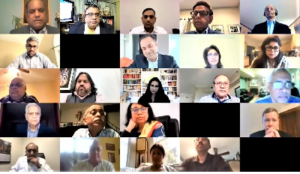 Representing the most impacted Hotel/Hospitality, Shelly Nichani, President, Infinity Hospitality Group, Stamford, CT, said, while the industry has been severely affected by the pandemic, “financial help from the Federal government has helped much, without which it would have been catastrophic.” While stating that the hospitality industry in CT has been doing overall very well, but the pandemic has halted the path to progress. He was optimistic that with the vaccines and state help, the industry will return to normal soon.
Representing the most impacted Hotel/Hospitality, Shelly Nichani, President, Infinity Hospitality Group, Stamford, CT, said, while the industry has been severely affected by the pandemic, “financial help from the Federal government has helped much, without which it would have been catastrophic.” While stating that the hospitality industry in CT has been doing overall very well, but the pandemic has halted the path to progress. He was optimistic that with the vaccines and state help, the industry will return to normal soon.